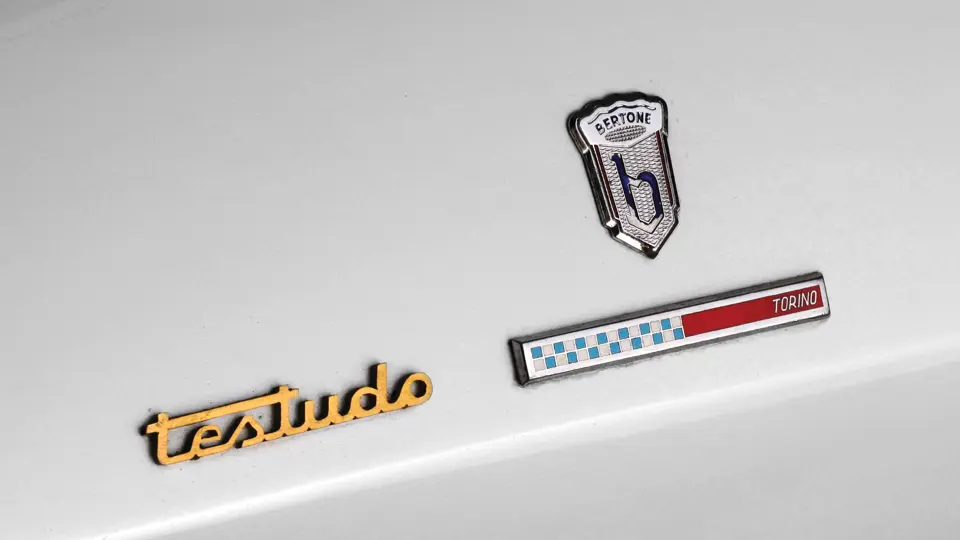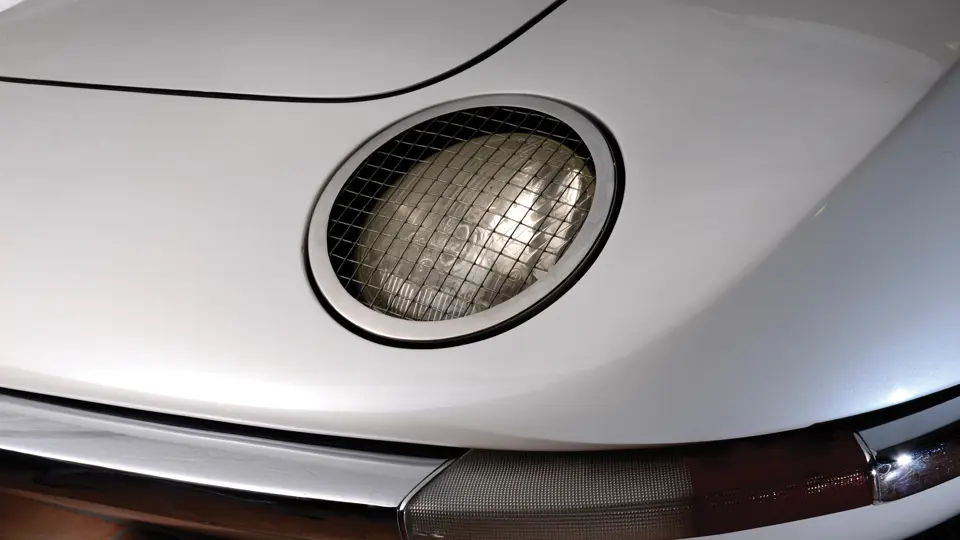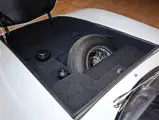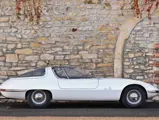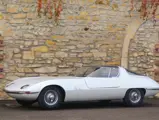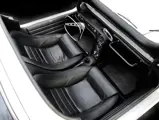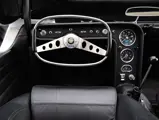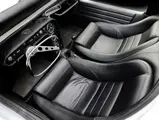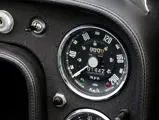Est. 81 bhp, 2,372 cc flat-six air-cooled engine with overhead camshafts and two valves per cylinder, two single-choke Rochester downdraught carburettors, four-speed manual gearbox, independent suspension with wishbones, coil springs, telescopic dampers and anti-roll bar at the front, semi-trailing swing-axles, coil springs, four-wheel drum brakes. Wheelbase: 2,400 mm (94.5")
- From the Collection of Bertone S.p.A.
- Unveiled at Geneva Motor Show (3 March, 1963)
- One-off design and highly influential in numerous other designs
- An early career highlight of young designer Giorgetto Giugiaro
- Fully restored before being shown at Pebble Beach
Founded in 1912, Bertone is the oldest surviving Italian coachbuilding company. From its Corso Peschiera works in Turin, the company grew steadily between the wars and acquired a solid reputation for the quality of its craftsmanship and the elegance of the models it offered. Hit by post-Second World War austerity, the concern owed its salvation partly to the American market through a lucrative agreement with Chicago-based importer Stanley “Wacky” Arnolt to deliver special-bodied MG and Bristol sports cars to the US. Soon after, large contract work for Alfa Romeo allowed Bertone to expand drastically. From the mid-1950s onwards, the company gained exposure through a series of striking show cars exhibited at the world’s leading motor shows and has continued that tradition to this day. Of the countless dream cars and one-off prototypes the company has produced over the past six decades, a few stand out for the far-sighted vision they presented and the impact they had on subsequent styling trends. And without a doubt, the Testudo ranks as one of the most influential Bertone concepts to date.
With this show car, Bertone effectively demonstrated the strength it had gained both stylistically and industrially through big manufacturing contracts in the 1950s, and its creation was a signal to the American market. It is believed the Corvair chassis on which the car was based was supplied by General Motors, who also delivered one to Pininfarina that same year. Bill Mitchell was apparently investigating the possibilities of promoting the Corvair in Europe with a locally-styled variant, and there were some exchanges between Bill Mitchell’s Detroit studio and Bertone’s headquarters over the winter of 1962/1963, as the car was under development in parallel with GM’s own Corvair Monza GT and SS dream cars. At Bertone, the man in charge of the styling was a young Giorgetto Giugiaro, who produced one of his career’s seminal works with the Testudo.
The Corvair Monza chassis was shortened and strengthened, without any modification to the drivetrain. Pushing out about 81 bhp, the air-cooled six-cylinder boxer engine of the Corvair was hardly a powerhouse, but its weight over the rear axle provided excellent traction and good balance under braking. The earliest photographs of the Testudo show the car still sporting Corvair wheels with white flank tyres, which were however soon replaced by a more flattering set of wire wheels that remain with the car to this day.
The name Testudo – a Latin root for the word turtle, hence the turtle badge adorning the car’s rear – was chosen to symbolise the aesthetic theme. A sharp waistline crease running around the car (extended by the front and rear bumpers) divided the body into a bottom and top half, somewhat reminiscent of a turtle’s shell. In a 1974 interview of Giorgetto Giugiaro by Karl Ludvigsen, recently published in Automobile Quarterly, Volume 49 No. 3, the Maestro commented, “A car had two parts: one part was the side view and the other part was the plan view. In the Testudo, I broke down these two parts. This was my first attempt to avoid having two separate parts but rather to have one part blending into the other. […] That was a car with which I really felt I contributed to car design.”
Originally exhibited in metallic silver, the Testudo was soon repainted in pearlescent white, pioneering this type of finish.
The famous pop-up headlights rotated upwards, and a neat touch indicative of Bertone’s attention to detail were the flaps at the base of the fairings which seamlessly filled the opening created in their upright position.
Tail-lights, for the first time in polycarbonate plastics, were unobtrusively integrated in the rear bumpers, thus leaving the bodywork totally uncluttered to leave the shape extremely pure. With no need for an air intake, the front end was particularly smooth and streamlined.
Access to the cockpit was through a forward hinged canopy, a feature it shared with the almost contemporaneous Corvair Monza GT and which would be mimicked by many other American and Japanese concept cars for many years afterwards. The Testudo, however, added a full glass roof to its wraparound windscreen. Inside the cabin, the rectangular steering wheel had more in common with aeronautics than cars.
As one would expect, there is great all-around visibility from the driver’s seat, and the view over the crest line of the front wing is quite sublime. The steering wheel has black handles on both sides of the thin chromed rim. Instruments are laid out in an inverted L-shaped cluster with the dials set vertically ahead of the gearstick, leaving the view straight ahead unobstructed. The seat inclination is extreme, to comply with the car’s impossibly low overall height (1,060 mm / 41.7 in). Giugiaro’s period sketches show headrests which were not incorporated on the car, but the driving position is far from uncomfortable even without them.
The car did see some road use in its early life. A special Car Styling issue of 1981 presented an anecdote recounted by Giugiaro himself, about one evening when he used it to go and pick up his new bride, Maria Teresa, from Fiat’s design studios where she worked at the time: “I came across several hundred Fiat employees who were just leaving work when I arrived and it was a shambles. It was more than twenty minutes before I could escape from the car to go and get her. I guess that the men who were so excited over the Testudo all managed to miss their trains and buses. It was rather exciting.”
Famously, Nuccio Bertone drove to Geneva by road in the Testudo. Less known is the fact that Giorgetto Giugiaro drove it back to Turin at the end of the salon. In his Road & Track report on the show, Henry Manney noted that the car had “photographers running from all over.”
Besides photographers, there is more than a passing chance that the Testudo was the spark that caught Ferruccio Lamborghini’s eye and triggered a long and fruitful association between him and Nuccio Bertone. Besides the clear lineage with later Bertone creations such as the Miura and the Montreal, Porsche design director Anatole Lapine acknowledged his love for the Testudo when he penned the 928 coupé. The influence the one-off Chevrolet had on other designers was enormous, with references to its lines almost too many to list.
A couple of years after its Geneva debut, the Testudo was damaged whilst shooting a promotional film for Shell. The car suffered from a rear impact when it collided at speed with a second Bertone one-off motor show dream car, the Alfa Romeo Canguro. With so much money invested in the two show cars, accounts of the incident tell, quite understandably, of a positively furious Nuccio Bertone. The Testudo was stored but Nuccio Bertone did not want to spend money repairing it. To understand why the Testudo wasn’t immediately repaired after the crash, we can rely on comments Nuccio Bertone made in later years regarding the cost of building such a car in the first place: “The construction of a prototype involves around 15,000 hours of work, often ‘stolen’ from the normal work of the establishment.” Of the two cars, the Canguro suffered by far the worse damage, being judged beyond repair by Bertone and ending up abandoned in derelict state.
Giugiaro asked to have the Testudo once he left the design house, but to no avail. In 1974, it was offered for sale by Bertone at $10,000US despite its damaged condition. The Testudo was finally brought back from oblivion in the early 1990s when newly hired chief designer Luciano d’Ambrosio supervised a full restoration. The Testudo subsequently made its first public appearance in over 30 years at the 1996 Pebble Beach Concours d’Elegance. In a 1980s interview, Giugiaro acknowledged: “There’s something special and affectionate about what I feel for the Testudo. It was the first prototype with which I had been given a free hand, without restraints, and the end result captured the attention of the entire automobile world.” Nearly five decades on, the impact this truly seminal dream car had on car design is still apparent.
This lot is subject to VAT (at 20%) on the full purchase price (both on the hammer price and the commission).
Circa 81 cavalli, motore 6 cilindri boxer 2,372 cm3 raffreddato ad aria, con alberi a camme in testa, due valvole per cilindro, due carburatori Rochester invertiti a singolo condotto, cambio manuale a quattro marce, sospensioni a ruote indipendenti a quadrilateri con molle elicoidali, ammortizzatori telescopici e barra antirollio sull’anteriore, bracci oscillanti al posteriore, freni a tamburo. Passo: 2.400 mm
- Dalla Collezione della Bertone S.p.A.
- Presentata al Salone dell’Automobile di Ginevra (3 marzo 1963)
- Esemplare unico le cui linee hanno fatto scuola, influenzando numerosi modelli successivi
- Una delle prime pietre miliari nella carriera di un allora giovane Giorgetto Giugiaro
- Totalmente restaurata prima di essere esposta al concorso d’eleganza di Pebble Beach
Fondata nel 1912, la Bertone è la più antica delle carrozzerie italiane ancora in attività. Dalle sue officine in Corso Peschiera a Torino, la carrozzeria è cresciuta costantemente negli anni Venti e Trenta, acquisendo una solida reputazione per la qualità delle sue realizzazioni e l’eleganza dei modelli proposti. Nell’immediato dopoguerra, l’azienda andò incontro a un periodo di austerità dal quale uscì in parte grazie al mercato nordamericano, in particolare per aver siglato un fruttuoso accordo con l’imprenditore di Chicago Stanley “Wacky” Arnolt. Già importatore di vetture sportive inglesi, Arnolt si affidò alla Bertone per vestire telai Aston Martin, MG e Bristol. Da lì a poco, la carrozzeria avrebbe ottenuto commesse importanti dall’Alfa Romeo, che portò l’azienda a crescere notevolmente. Attorno alla metà degli anni 50, la Bertone si fece notare nei vari Saloni internazionali dell'Automobile anche per una serie di fuoriserie strabilianti, iniziando così una tradizione che prosegue tuttora. Delle innumerevoli dream cars e prototipi rimasti pezzi unici che hanno segnato la storia dell’azienda lungo gli ultimi sei decenni, alcune sono considerate vere e proprie pietre miliari per la visione che hanno rappresentato e per l’impatto avuto sulle tendenze stilistiche successive. Si può dire senza alcun dubbio che fra queste visioni, la Testudo sia stata una di quelle che hanno avuto maggior influenza in assoluto.
Per la Bertone, questa vettura era la dimostrazione della forza che si era guadagnata sia sotto il profilo stilistico, sia sotto quello industriale, attraverso i contratti manifatturieri siglati negli anni 50, ed era anche un messaggio promozionale per il mercato statunitense. Si pensa che fu la stessa General Motors a fornire il telaio Chevrolet Corvair sul quale era basata, così come il colosso americano aveva già fornito a Pininfarina un telaio simile nello stesso anno. L’influente direttore dello stile della GM Bill Mitchell intendeva promuovere la Corvair sui mercati europei con qualche variante disegnata in loco. Ci furono quindi alcuni scambi tra gli uomini di Detroit e i vertici della Bertone durante l’inverno 1962/1963, nello stesso periodo in cui alla GM si lavorava sui prototipi da salone Corvair Monza GT e SS. Alla Bertone, lo stile era affidato ad un giovane Giorgetto Giugiaro, che avrebbe così firmato uno dei suoi primi capolavori proprio con la Testudo.
Il telaio della Corvair Monza venne accorciato e rafforzato, mentre rimase invariata la parte meccanica. Sviluppando 81 cavalli all’incirca, il boxer a sei cilindri raffreddato ad aria della Corvair non era un mostro di potenza, ma il suo peso collocato sull’assale posteriore conferiva ottime doti di trazione e di stabilità in frenata. Sulle prime foto della Testudo divulgate all’epoca si notano i cerchi originali della Corvair con pneumatici a fasce bianche, che però vennero ben presto sostituiti con gli splendidi cerchi a raggi che la vettura sfoggia ancora oggi.
Sul posteriore della vettura spiccava uno stemma a forma di tartaruga. In effetti, il nome Testudo deriva dalla radice latina per la parola tartaruga, e fu scelto proprio per illustrare lo schema concettuale della carrozzeria, visivamente divisa in due gusci da uno spigolo che correva tutto attorno alla vettura all’altezza dei paraurti. In un’intervista a Giorgetto Giugiaro del 1974 e pubblicata recentemente sul volume 49, n.3 della rivista trimestrale Automobile Quarterly, il famoso stilista commentava: “Allora, una macchina era definita da due parti: una parte era la sua elevazione laterale, e l’altra era la pianta (vista dall’alto). Sulla Testudo, ho voluto rompere questo schema. Si trattava del mio primo tentativo di rinunciare a queste due parti distinte, e al contrario di fonderle l’una nell’altra. […] Era una vettura con la quale ho avuto davvero la sensazione di dare un mio contributo alla forma dell’automobile.”
Di color argento all’origine, la Testudo venne rapidamente riverniciata con un bianco perlato, un tipo di vernice allora all'avanguardia.
Divennero famosi i gruppi anteriori a filo con la carrozzeria che ruotavano all’insù. La cura del dettaglio che contrassegnava il lavoro della Bertone era evidente nella copertura che veniva a richiudere perfettamente il vano quando i fanali erano in posizione eretta.
Le luci posteriori, realizzate per la prima volta in policarbonato, erano integrati impeccabilmente nei paraurti, mantenendo così liscio ed essenziale il volume della carrozzeria. Senza il bisogno di una griglia di aspirazione anteriore, il muso era ugualmente puro e come disegnato dal vento.
Una cupola incernierata in avanti si alzava per consentire l’accesso all’abitacolo. Quasi in contemporanea, la Corvair Monza GT presentava lo stesso tipo di apertura che venne poi ripreso su molte altre dream cars statunitensi e giapponesi anche ad anni di distanza. Tuttavia, la Testudo abbinava a questa soluzione un parabrezza avvolgente e un tettuccio interamente trasparente in plexiglas. Il posto guida, caratterizzato da un volante schiacciato a forma rettangolare, era di ispirazione più aeronautica che automobilistica.
Come è lecito aspettarsi, la visibilità dal sedile del guidatore è eccezionale, e il colpo d’occhio sulla cresta del parafango anteriore semplicemente sublime. Il volante è formato da un sottile tubo cromato con due impugnature nere ai lati. La strumentazione si sviluppa verticalmente su una consolle a forma di L ruotata all’ingiù in corrispondenza della leva del cambio, così da lasciare sgombra la vista davanti. I sedili sono fortemente inclinati a causa dell’altezza da terra estremamente ridotta della vettura (appena 106 cm). Sebbene alcuni dei bozzetti prodotti da Giugiaro all’epoca facessero intravedere l’idea di inserire gli appoggiatesta, la posizione di guida risulta assai confortevole anche in loro assenza.
La vettura fu usata su strada durante le sue prime fasi di vita. Un numero speciale della rivista Car Styling, pubblicato nel 1981, riportava un aneddoto raccontato da Giugiaro stesso quando, fresco di matrimonio, gli venne concesso di usare la vettura una sera per andare a prendere la moglie Maria Teresa presso il centro stile Fiat ove lei lavorava: “Mi imbattei in qualche centinaio di operai della Fiat che stavano appena lasciando la fabbrica, e fu il caos. Impiegai più di venti minuti prima di liberarmi per andarla a cercare. Immagino che tutti fossero così esaltati nel vedere la Testudo da perdere il treno o la corriera. Fu un momento piuttosto entusiasmante.”
E’ noto che Nuccio Bertone (figlio del fondatore Giovanni) guidò la vettura di persona per portarla su strada al Salone di Ginevra, ma è meno noto che fu poi Giugiaro a riportarla a Torino a salone finito. Nel suo resoconto sulla fiera ginevrina, pubblicato da Road & Track, Henry Manney notava che la vettura aveva richiamato l’attenzione dei fotografi “accorsi da ogni dove.”
Aldilà dei fotografi, è più che probabile che la Testudo fu anche la scintilla che infiammò Ferruccio Lamborghini, e lo portò a formare una lunga e proficua alleanza con Nuccio Bertone. Oltre all’influenza che la Testudo esercitò sulle Miura e Montreal prodotte da Bertone in seguito, anche il direttore del design di Porsche Anatole Lapine attestò la sua passione per la Testudo nel disegnare la 928. L’impatto che la vettura ebbe su altri stilisti fu tale che i modelli che ne trassero ispirazione sono troppo numerosi da elencare.
Un paio d’anni dopo il suo debutto a Ginevra, la Testudo venne danneggiata nel corso delle riprese per un filmato promozionale della Shell, subendo un urto nella parte posteriore in una collisione con un'altra fuoriserie della Bertone, l’Alfa Romeo Canguro. Avendo investito ingenti somme di denaro nel realizzare le due vetture, è facile immaginarsi l’ira che l’incidente scatenò in Nuccio Bertone. Il titolare dell’azienda non volle saperne di riparare la vettura, e fu semplicemente rimessata. Possiamo affidarci ad alcune sue dichiarazioni di molti anni posteriori all’evento per capire come mai non fu riparata immediatamente: “La costruzione di un prototipo richiede circa 15.000 ore di lavoro, spesso rubate alle normali attività dello stabilimento.” Delle due vetture coinvolte, la Canguro ebbe la peggio, e dopo essere stata considerata non riparabile da Bertone, fu lasciata a deperire lentamente.
Quando lasciò l’azienda nel 1965, Giugiaro chiese – senza successo – di portare con sé la Testudo. Malgrado le condizioni in cui versava la vettura, Bertone ne chiedeva comunque 10.000 dollari nel 1974, quando fu sul momento di cederla. Si dovette aspettare l’inizio degli anni ‘90 prima che venisse finalmente ripristinata, quando il neoassunto direttore dello stile Luciano d’Ambrosio ne guidò il completo restauro. La Testudo fece così la sua apparizione pubblica dopo oltre 30 anni dalla prima al Concorso d’Eleganza di Pebble Beach. In una intervista rilasciata negli anni 80, Giugiaro ammise: “C’è qualcosa di speciale e di affettuoso in quello che provo per la Testudo. Era il primo prototipo per il quale mi fu lasciata mano libera, senza restrizioni, e il risultato finale catturò l’attenzione di tutto il mondo dell’automobile.” A quasi cinquant’anni di distanza, l’importanza che questo prototipo avveniristico ebbe per lo sviluppo dello stile automobilistico risulta ancora lampante.
Questo lotto e imponibile Iva (20%). L'imposta verra calcolata sul prezzo di acquisto totale (prezzo di aggiudicazione piu commissione).


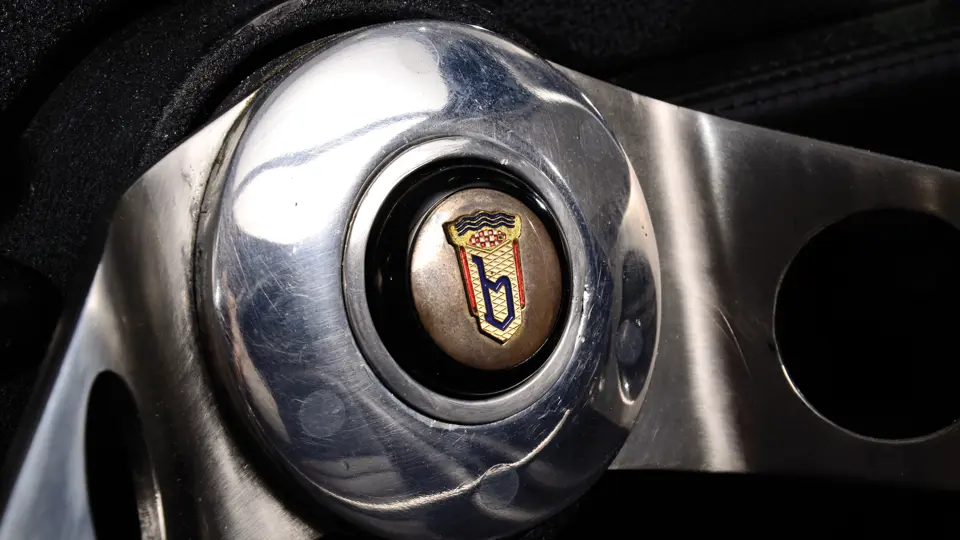

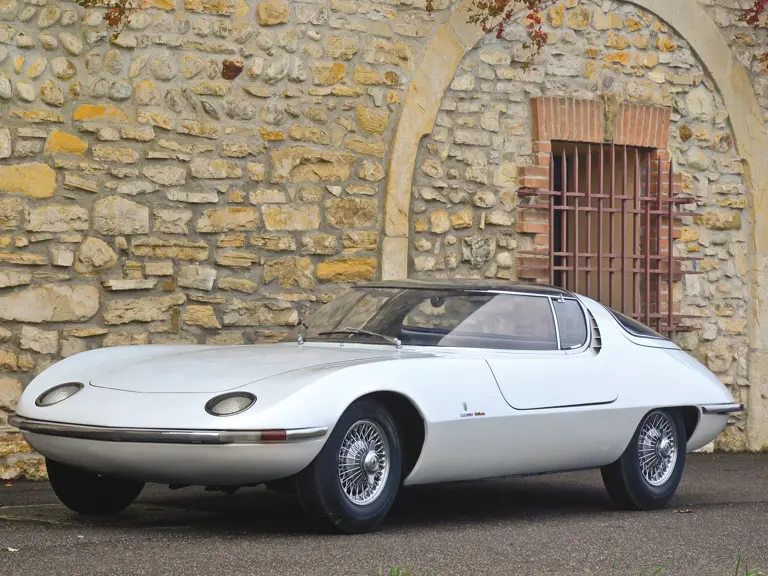


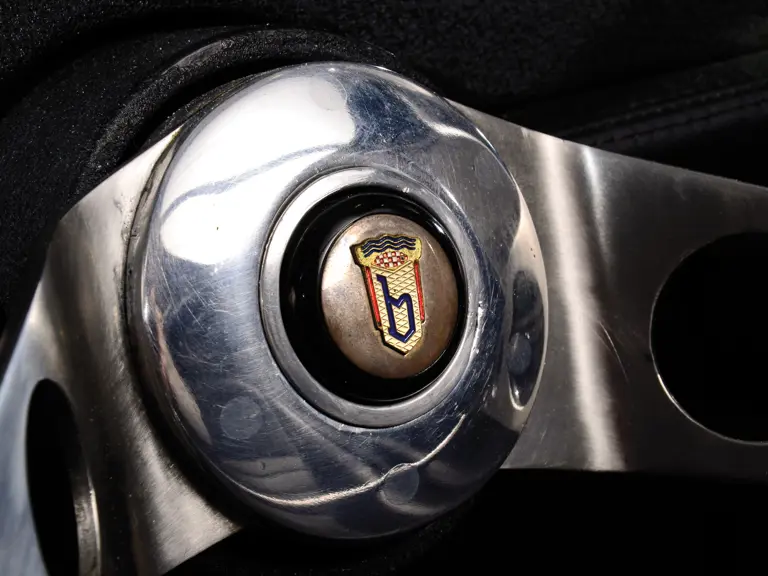
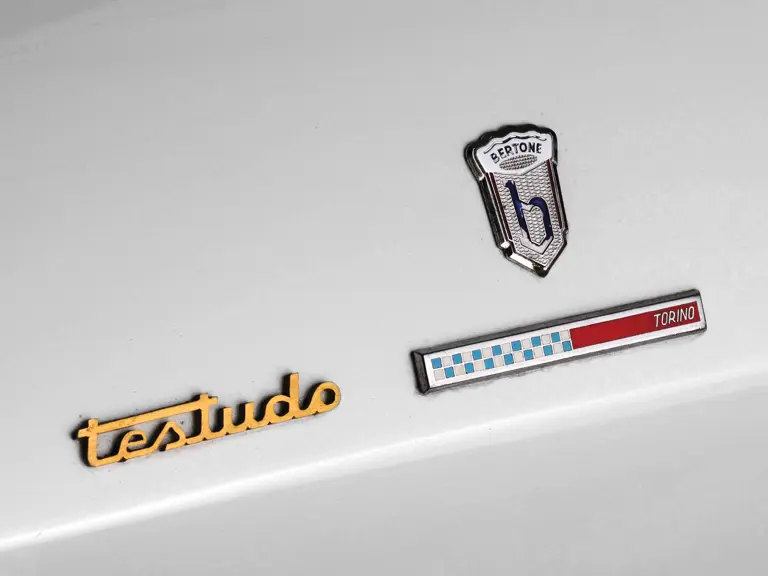
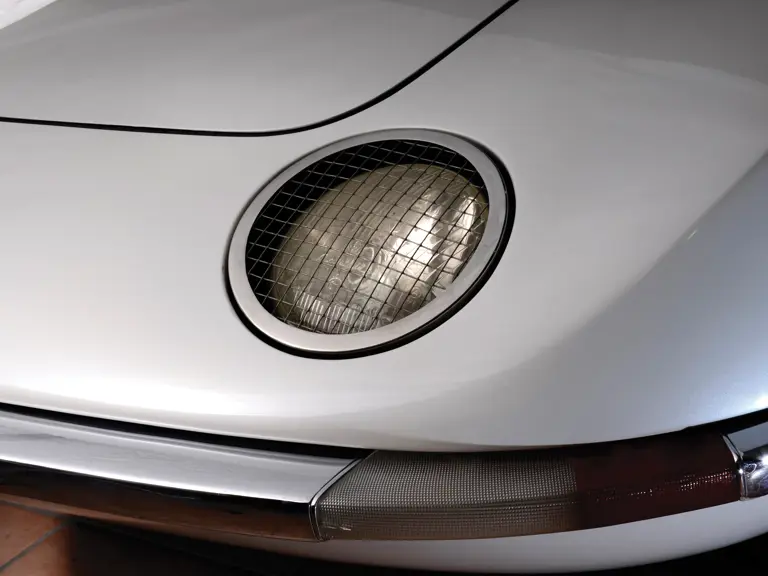
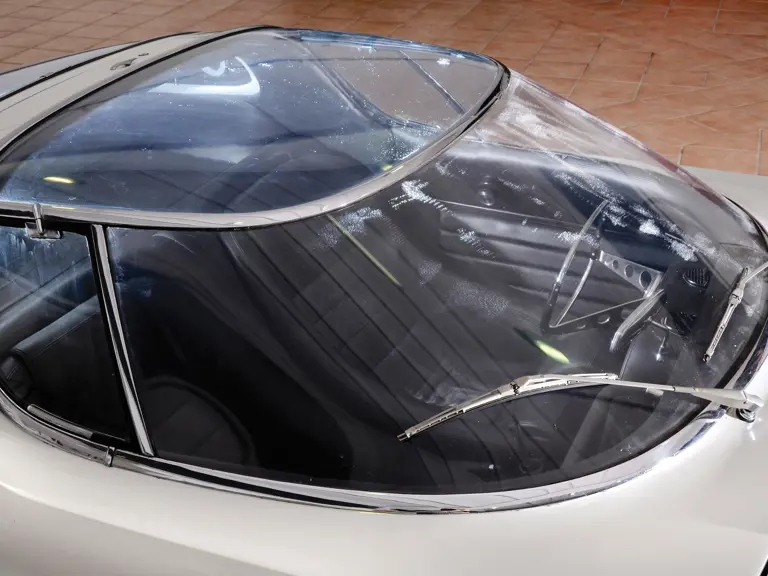


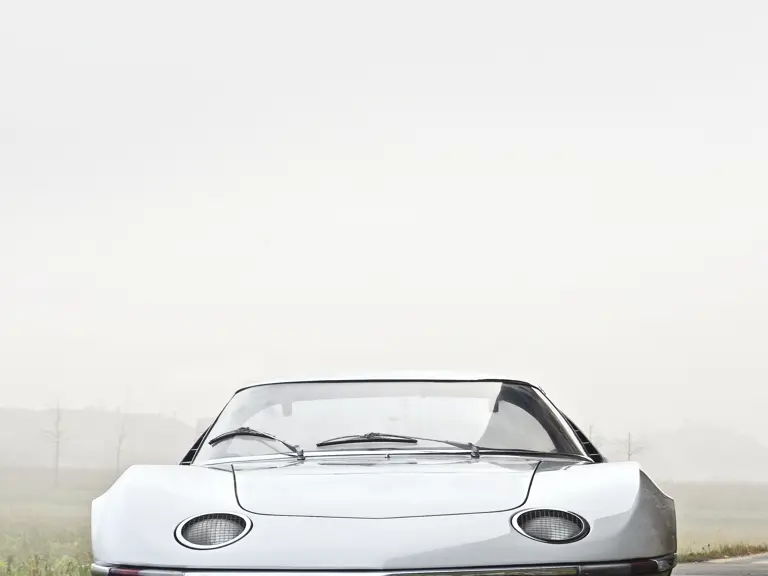

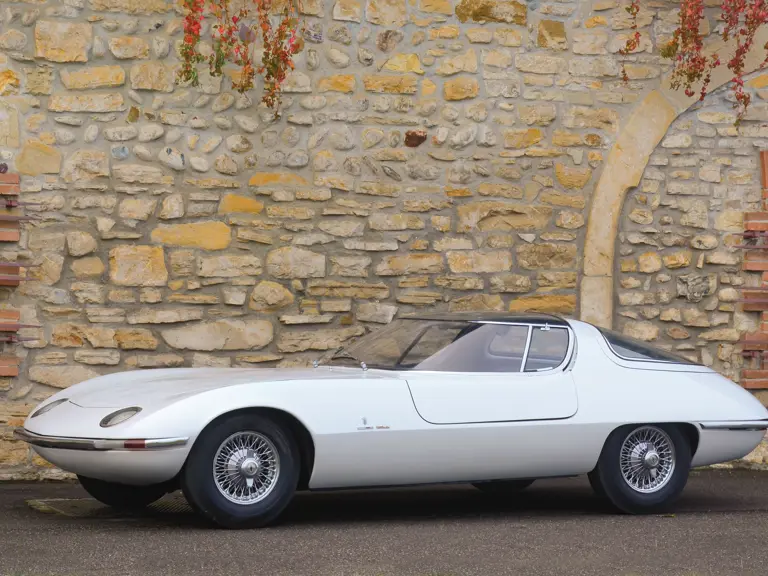
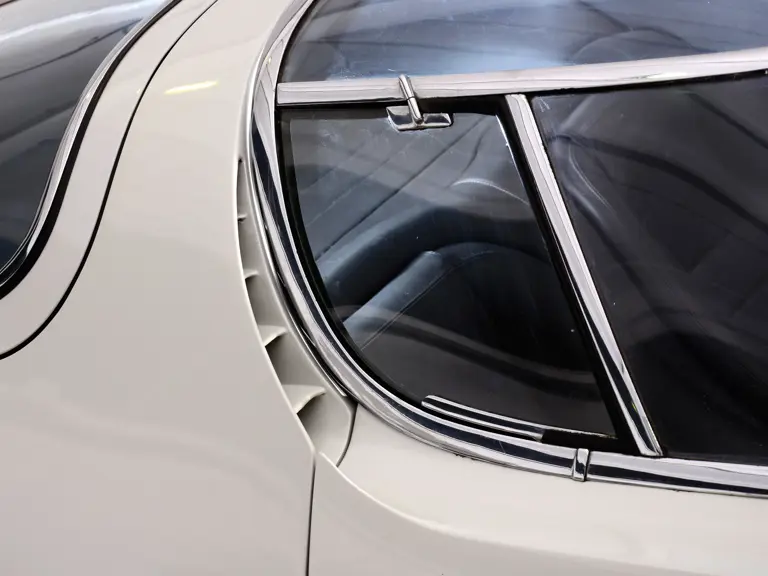

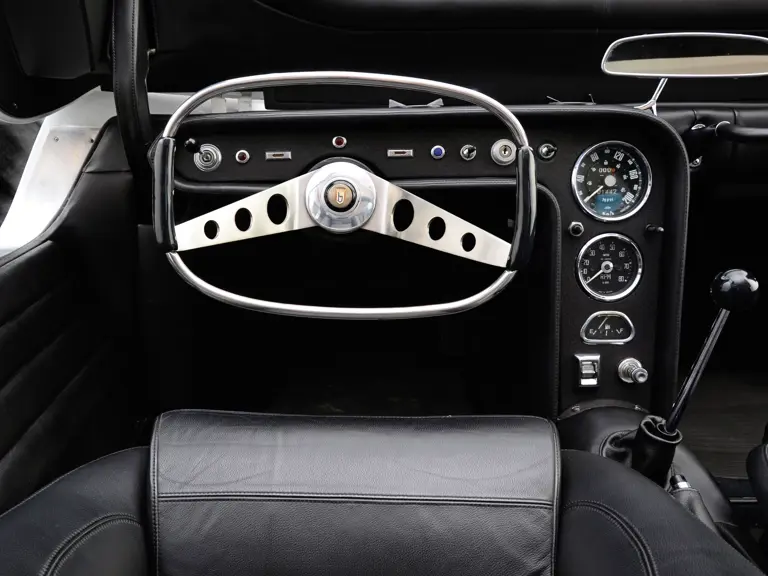



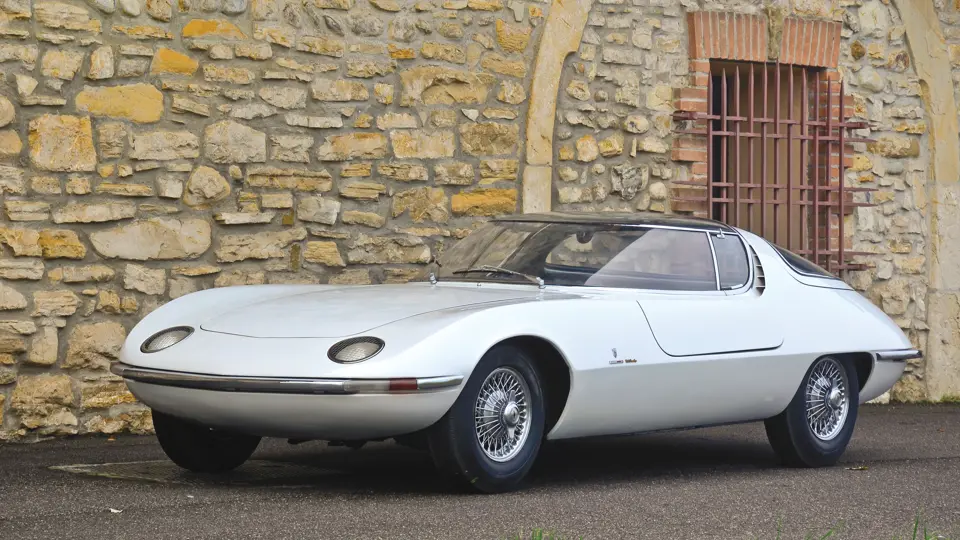
 | Cernobbio, Italy
| Cernobbio, Italy
